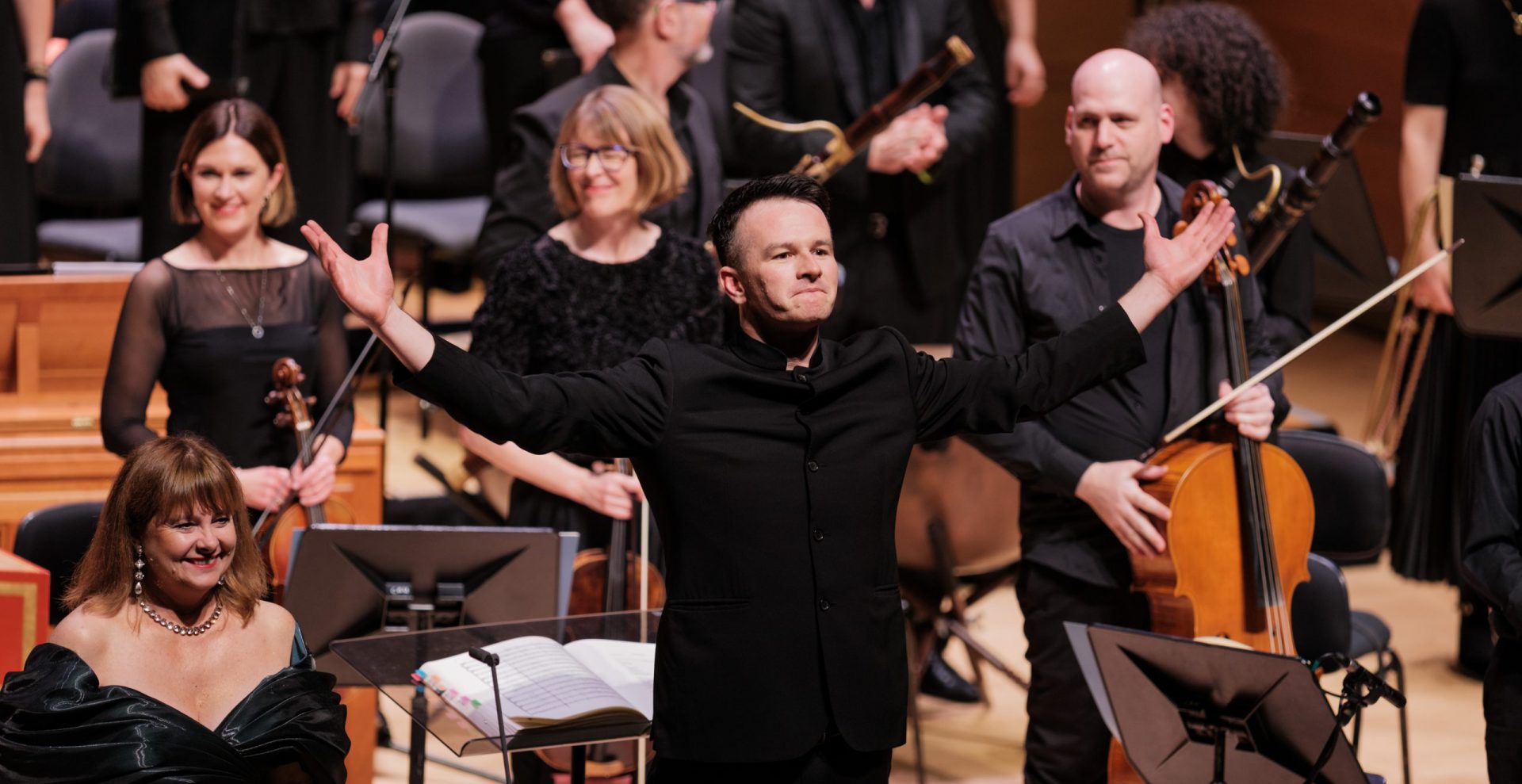An exemplar of choral performance.
Lutheranism is often mistaken for Calvinism. But its break with Catholicism was not as radical as many made it out to be. There was as much continuity as there was change. Luther himself greatly valued the liturgical importance of music, Lutheranism long had mystical, almost quietist, undertones, and much of the Lutheran service is modelled on the Catholic mass. Hence the idea of the shorter “Lutheran Mass”, or the Missa Brevis, which had preserved the five parts of the Mass ordinary. Bach composed four such Missae Brevis.
Bach himself was a Protestant. He was largely in the employ of Protestants. But one of the most musical courts of his age – the court of Dresden – was headed by an Elector who had converted to Catholicism in order to ascend to the Polish throne. It was for that court that Bach composed his 1733 Mass ordinary, and it was from that 1733 Mass ordinary that Bach developed his Mass in B minor.
Despite his apparent liturgical versatility, Bach often opted to recycle past works when it came to Catholic devotional music. Much of the Mass in B minor is borrowed from his earlier cantatas, some dating from his youth in Weimar. Remarkably, the result is not a pastiche of incoherent parts but a veritable fiori musicali of some of his best works, all rolled up in one glorious summation of Bach’s musical life. Much like his Art of Fugue, it was probably meant more to be studied than heard, as with most of Bach’s late works.
The Sydney Chamber Choir started off strong with the bold Kyrie eleison, drawing out the original upsilon by singing “koorie”. Sara Macliver and Sally-Anne Russell emerged with the responsive duet, Christe eleison. The tone was keen and exhortatory. The two seemed to meld into one, save for the fact that Russell was singing her rhythms double-dotted.
The horns shone in the Gloria in excelsis Deo and so did Macliver in the first aria, Laudamus te. With a delightful introduction on violin by Matthew Greco, Macliver’s voice seemed to waft unassumingly above the audience, and the trills were never showy. It was all rounded off by a nice ascending arpeggio by Greco.
The Muffat Collective was uniformly impressive and never once slipped.
The choir was at its best in the Gratias agimus tibi. Despite the contrapuntal heaviness, the choir lightened it all with a strong sense of unity and robust articulation. It is clear that the choir invested much effort in this.
We have another duet for the Domine deus, which is replete with liturgical significance. Melissa Farrow and Mikaela Oberg introduce on the flutes. Andrew Goodwin and Macliver imitate each other, almost canonically, and “Pater”, “Fili” and “Deus” are sung so closely that the concepts become inextricably linked. We are immediately flung into the Qui tollis, which was played at a relatively quick tempo. David Greco then emerges for the Quoniam, where there were some slight slips in timing. The scansion in some of the arias is awkward – another tell-tale sign that Bach was adapting old music to new text.
After the interval came the sprightly Credo. It seems that some of the immense energy of the first half was lost in the second; at times it became somewhat muted, and the iterations of ‘Cre-do’ could have been more bell-like and pronounced. But the energy resolutely picked up in the Et incarnatus est, where the choir’s singular ability to create a dramatic build-up was on full display.
The Confiteor is always a moment to behold. Especially so in this performance. It is almost stile antico in its complexity. It was difficult not to get chills when the bass emerged with the plainchant, with the altos in quick succession. In most performances, this is well-hidden. But it was sung robustly here, and to great effect.
The pace usually dials down with the Et expecto, where the pace, melody and harmony seem to degenerate, eerily, into thin ether. Not so here. The choir quietens down, but the pace remained steady, which was an interesting musical choice.
As always, Goodwin gave a robust and impassioned performance in the Benedictus, and it was all rounded off with a consistently solid Dona nobis pacem by the choir.
